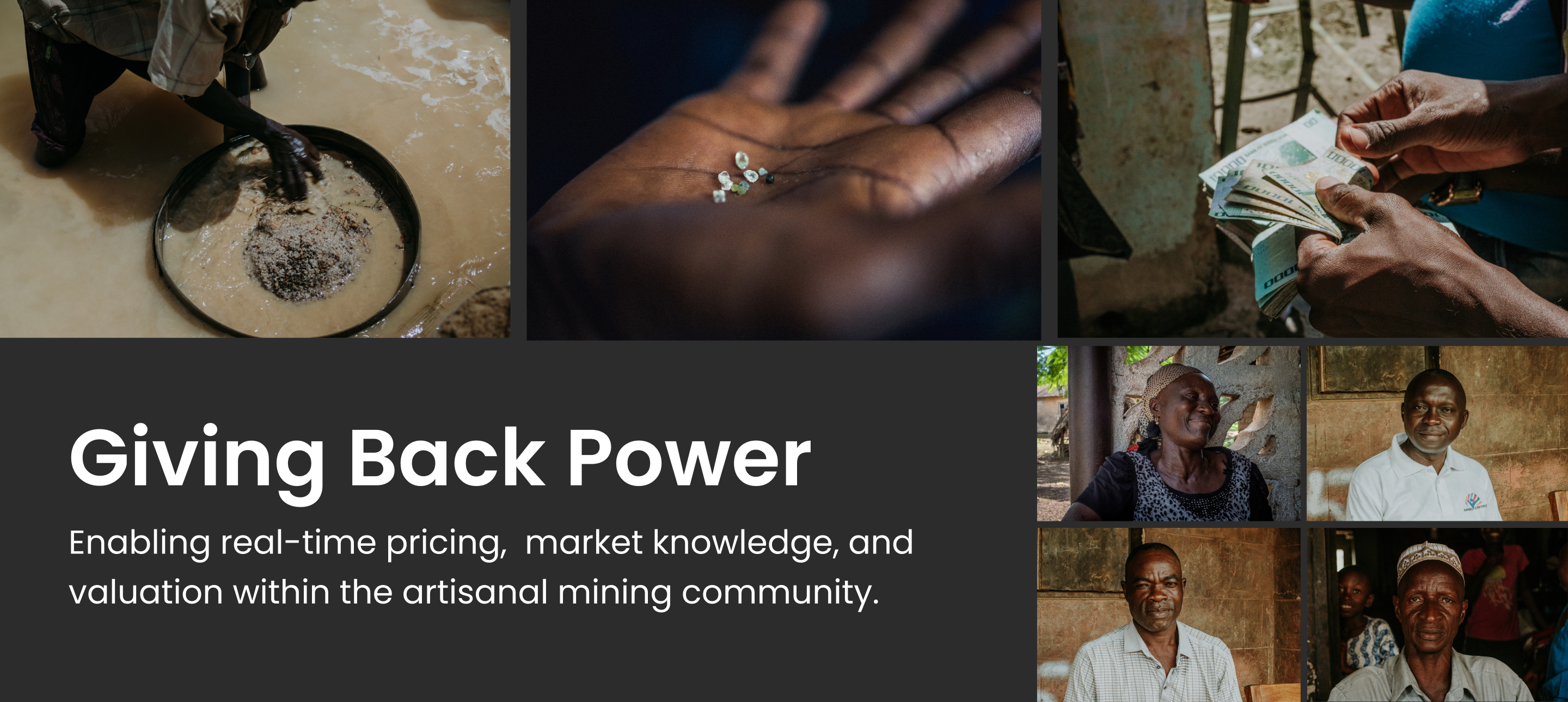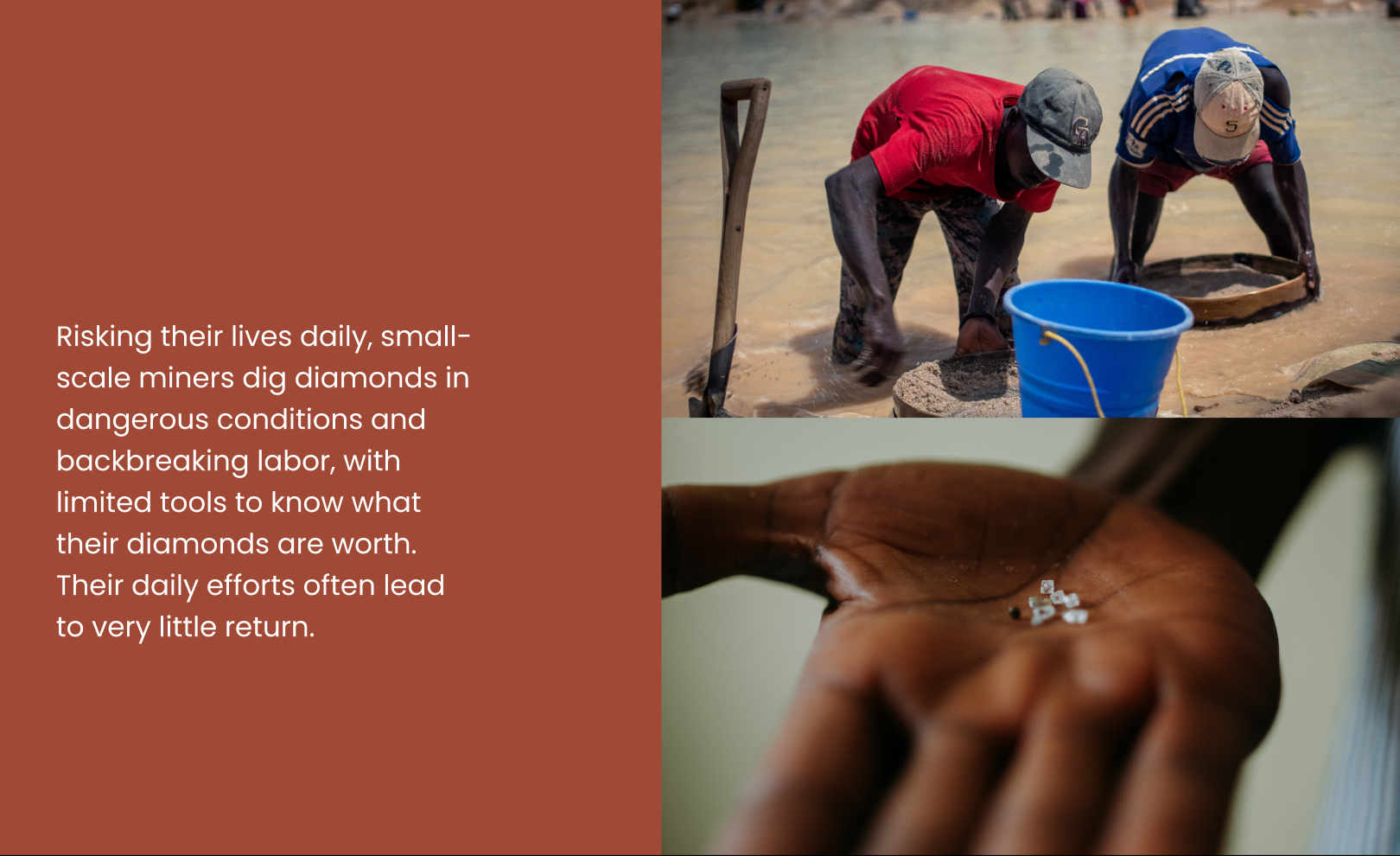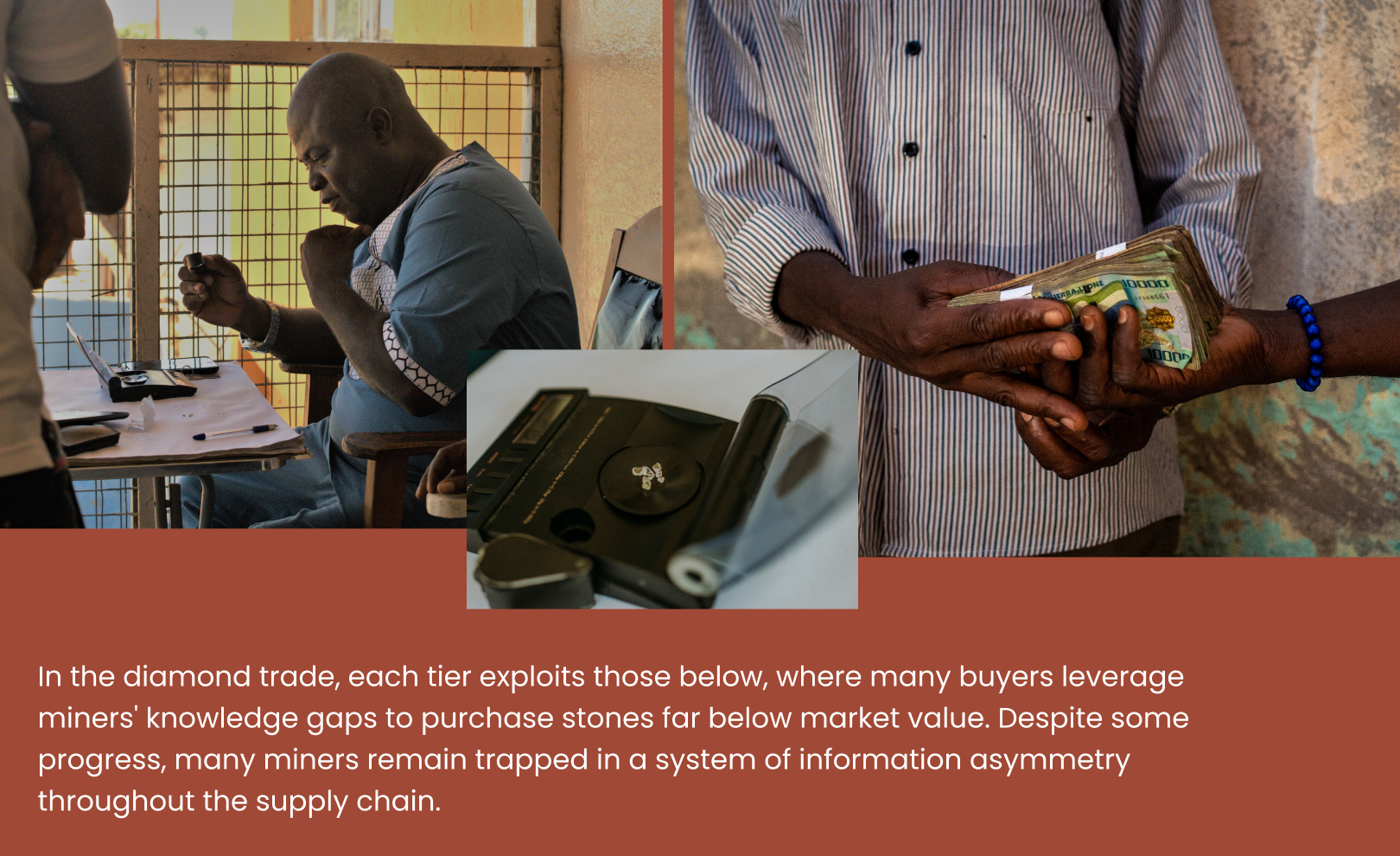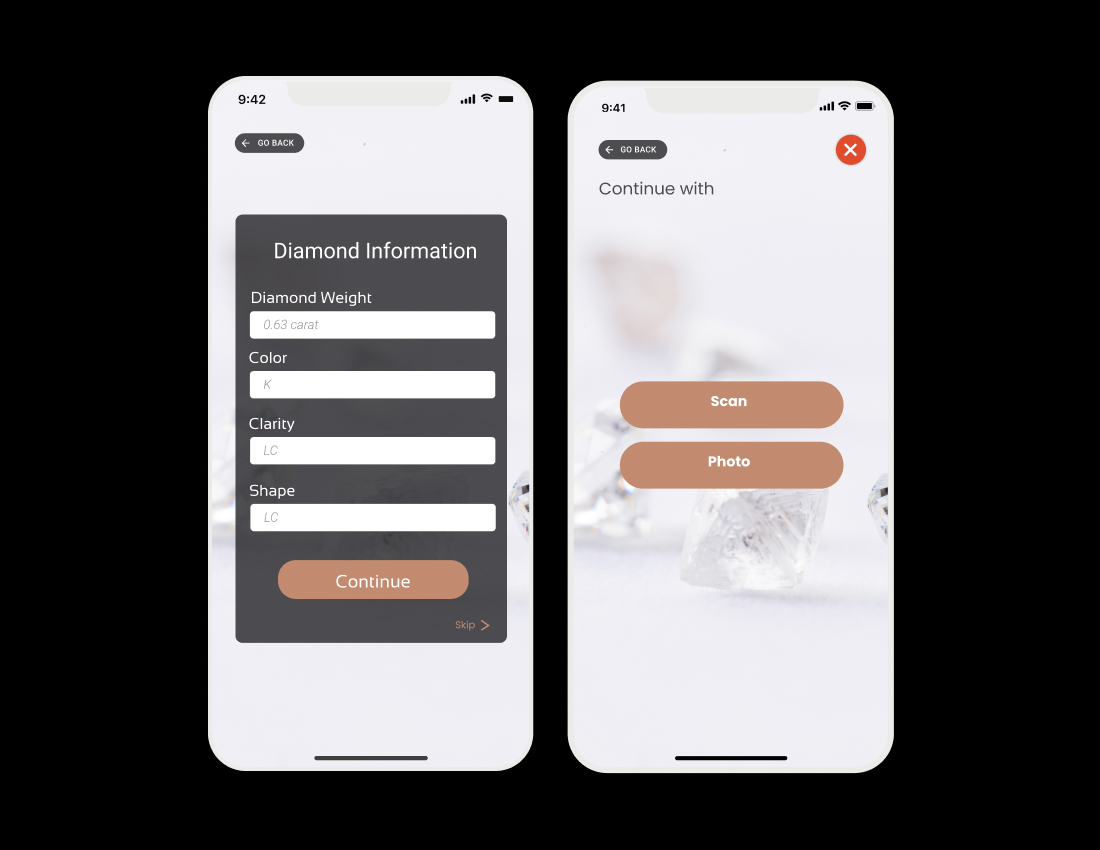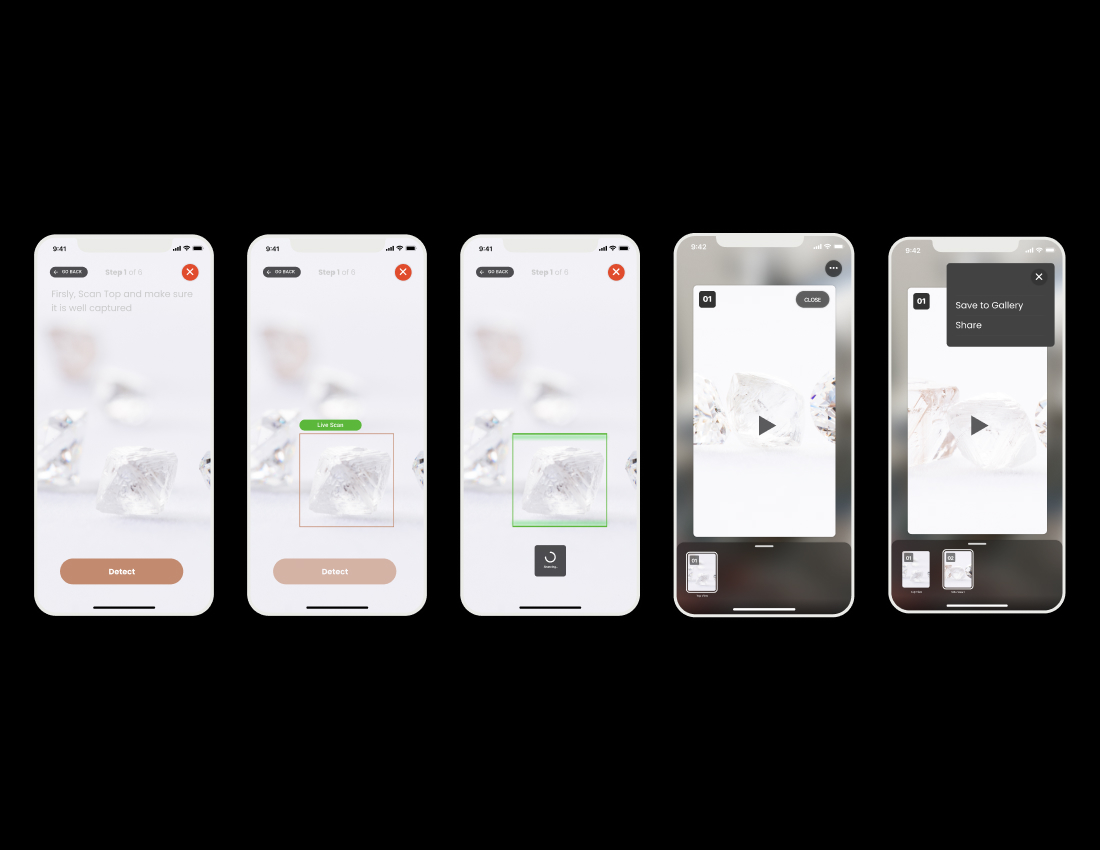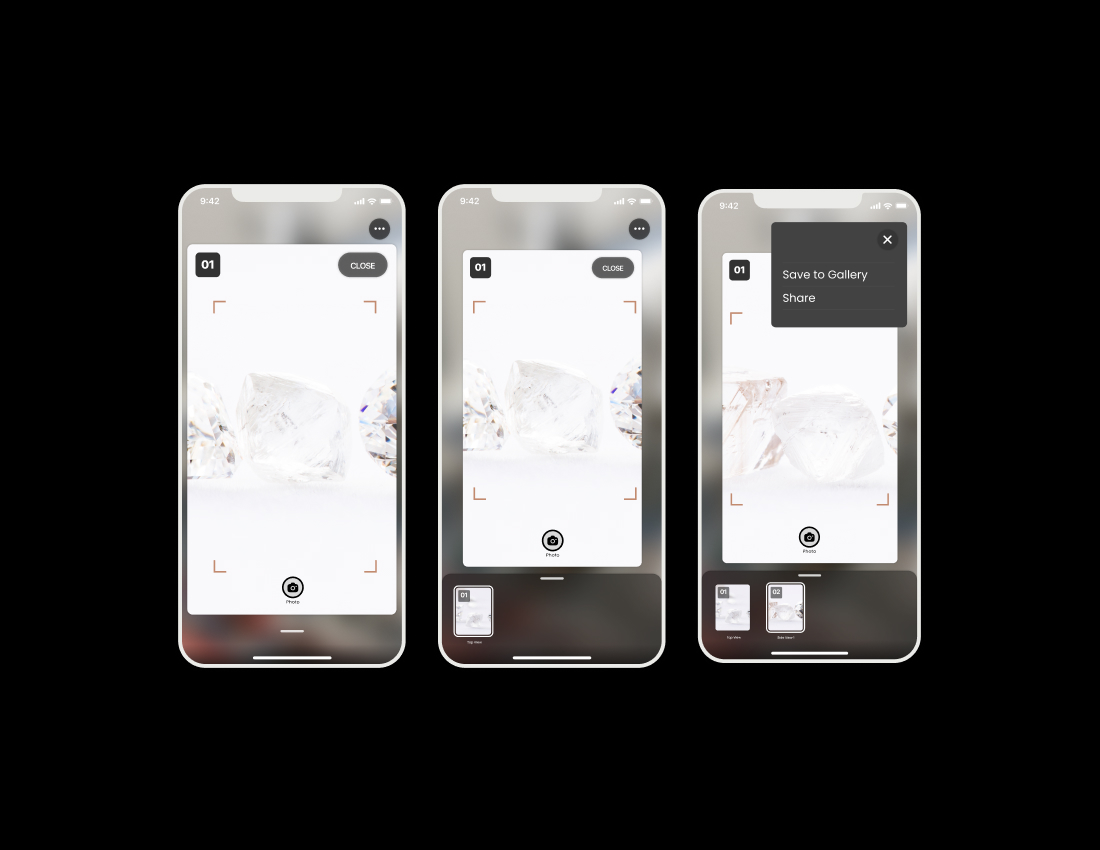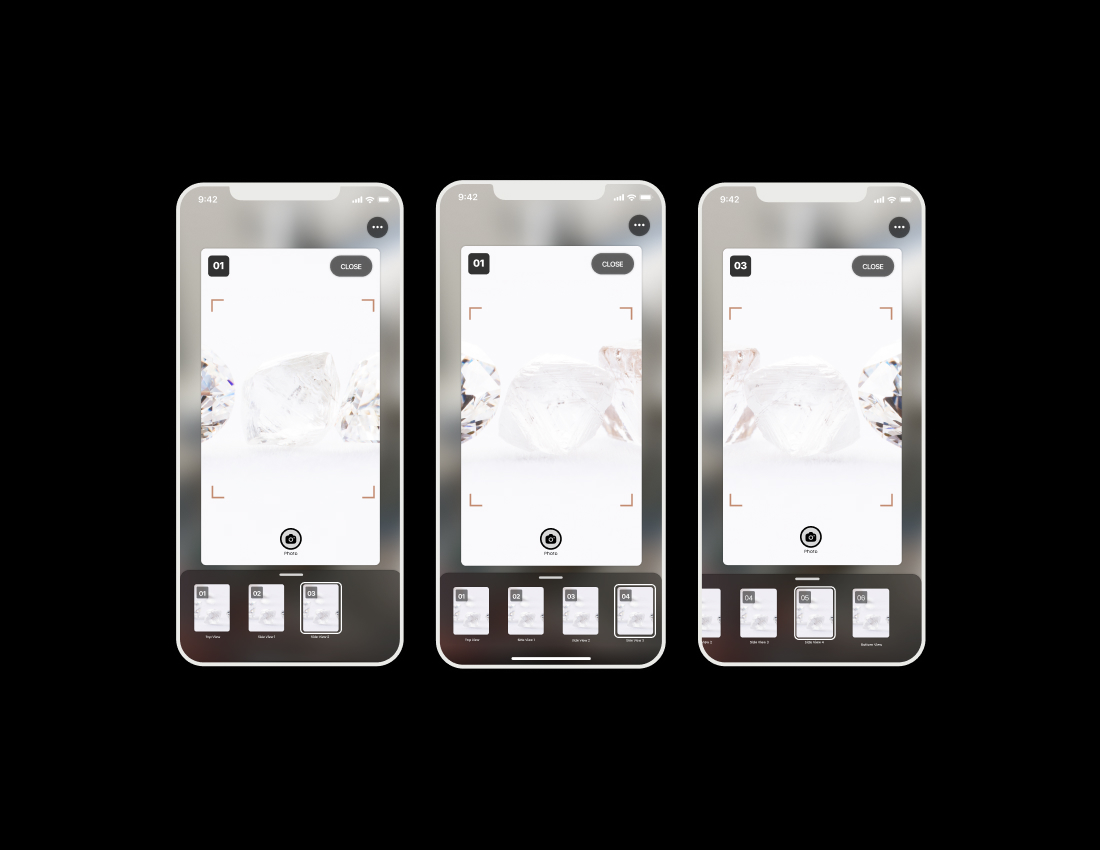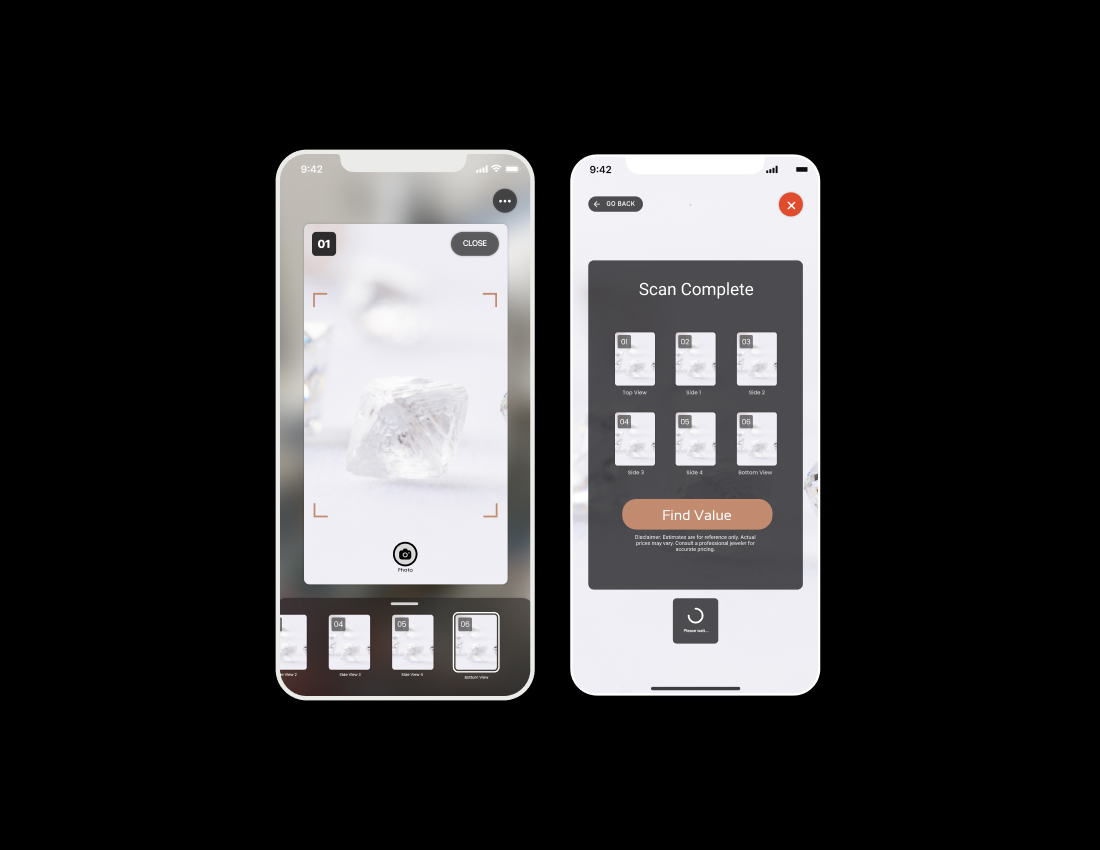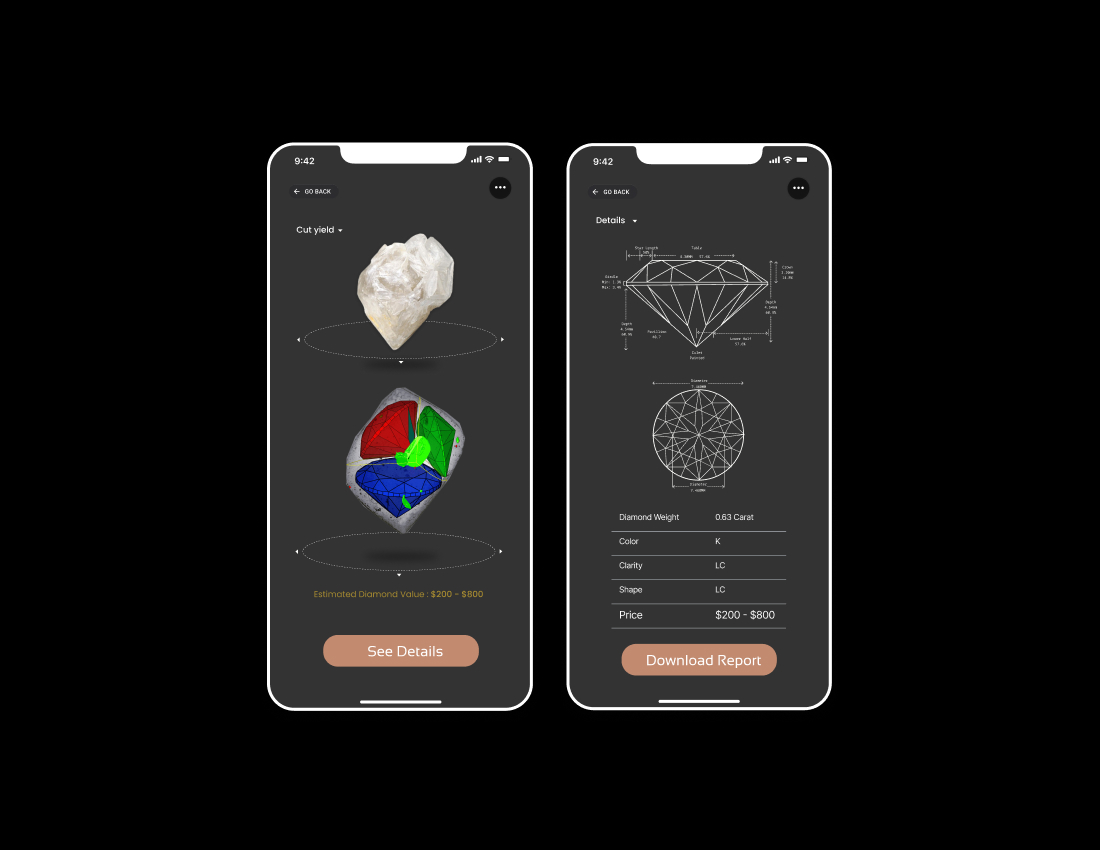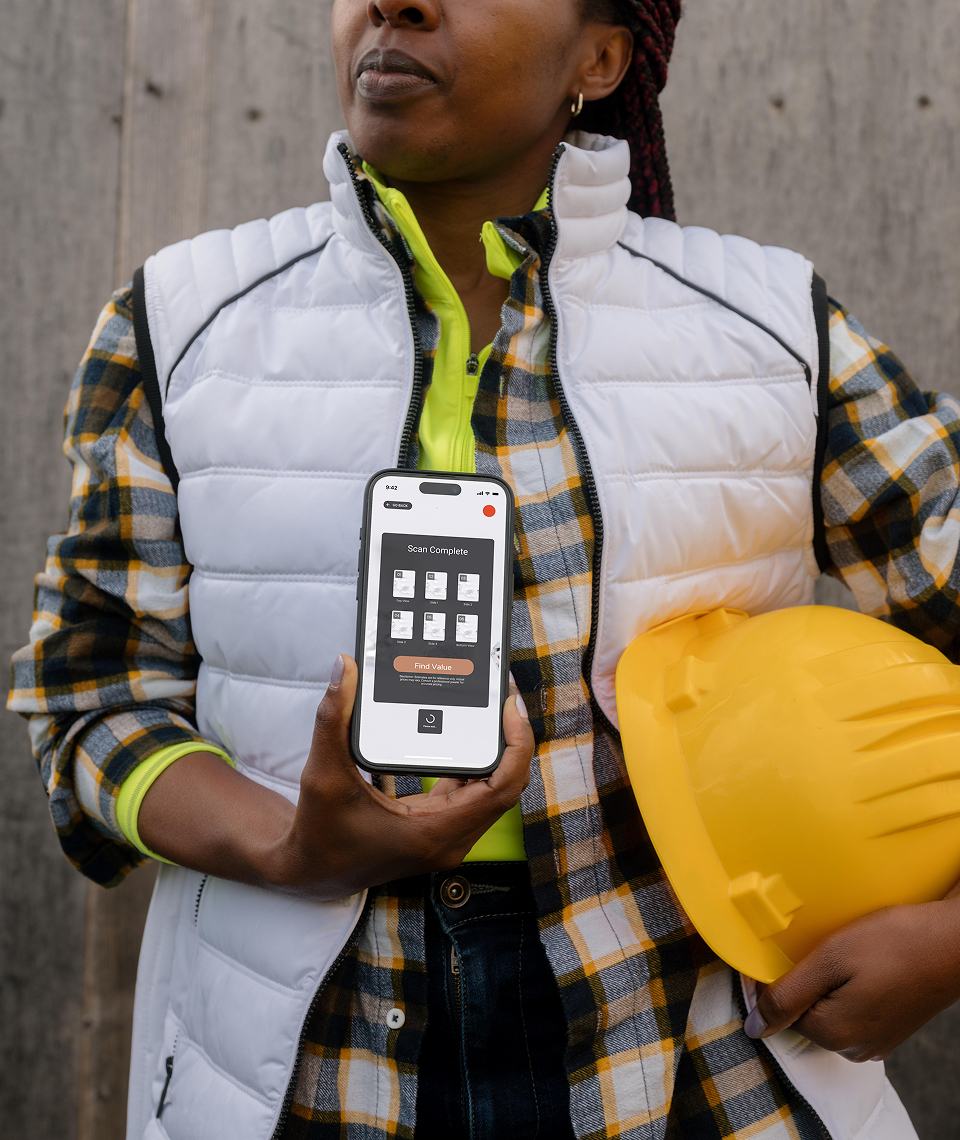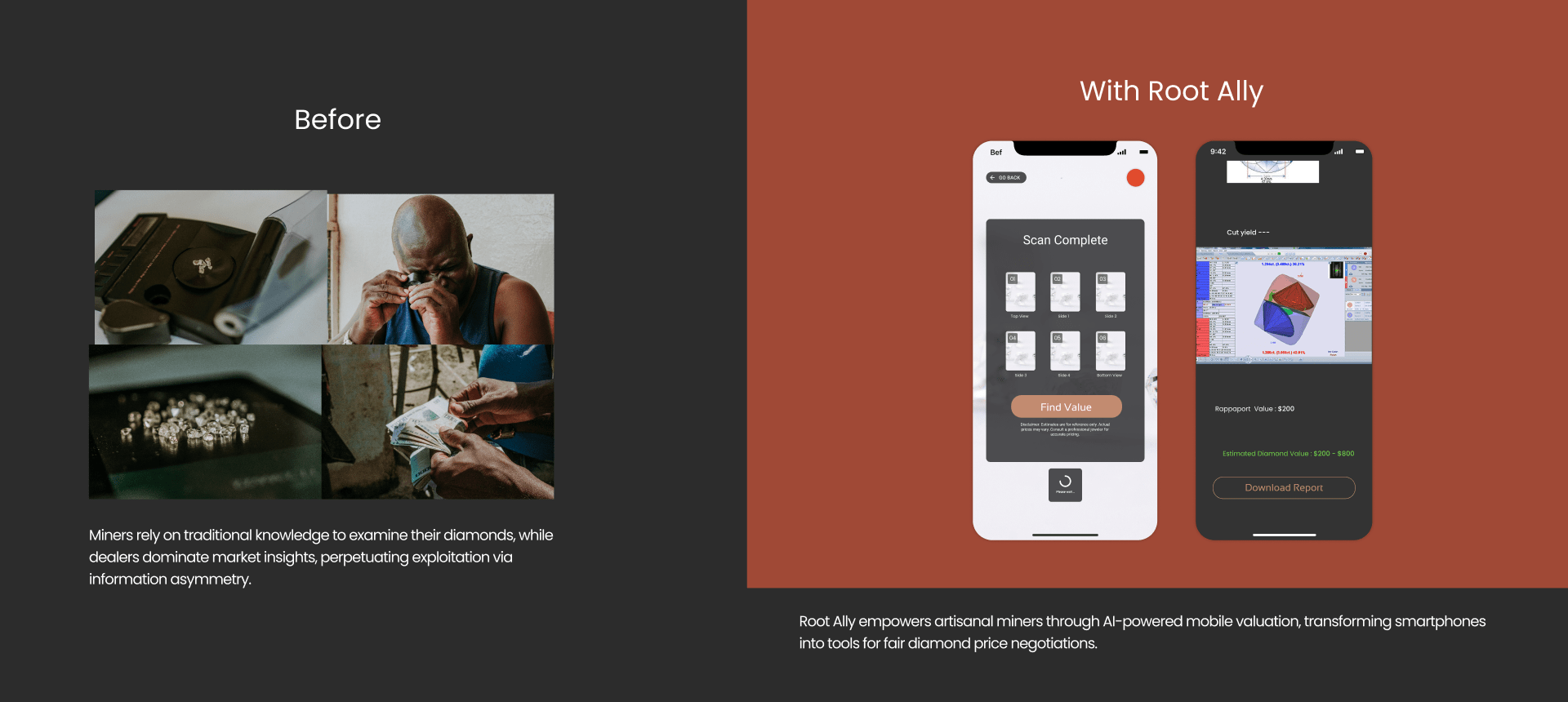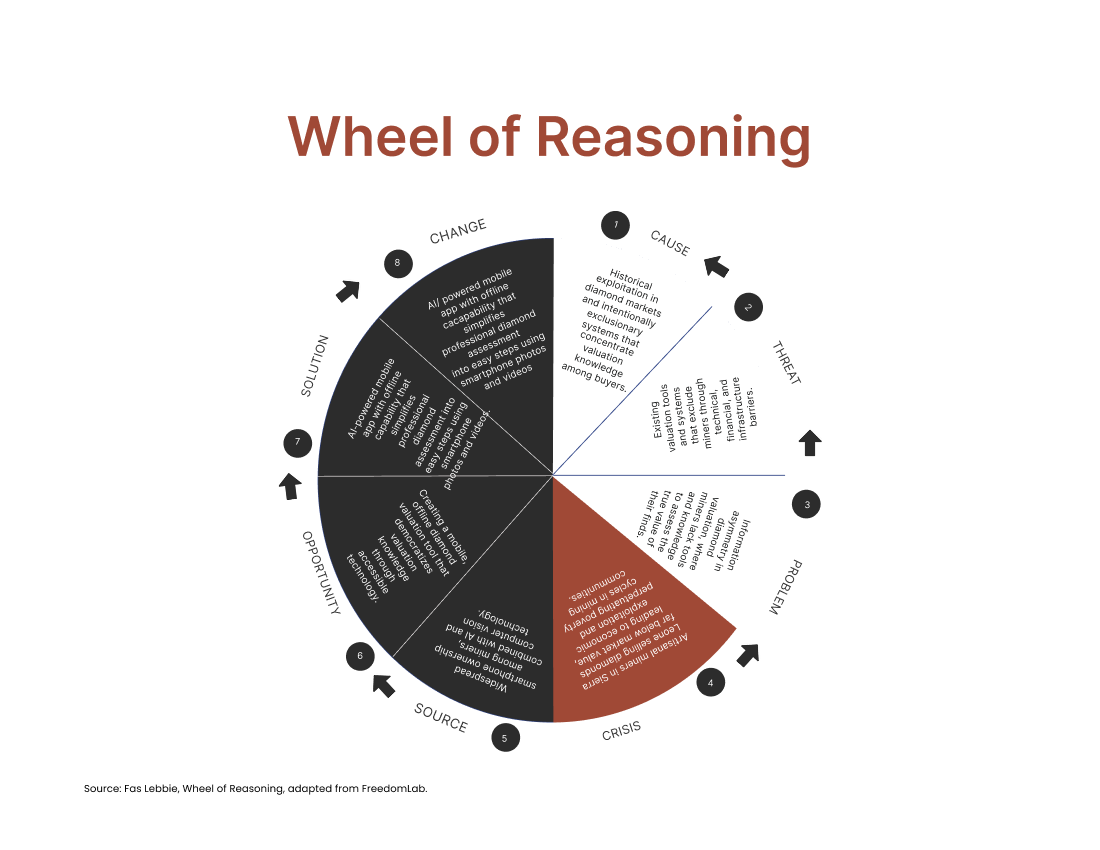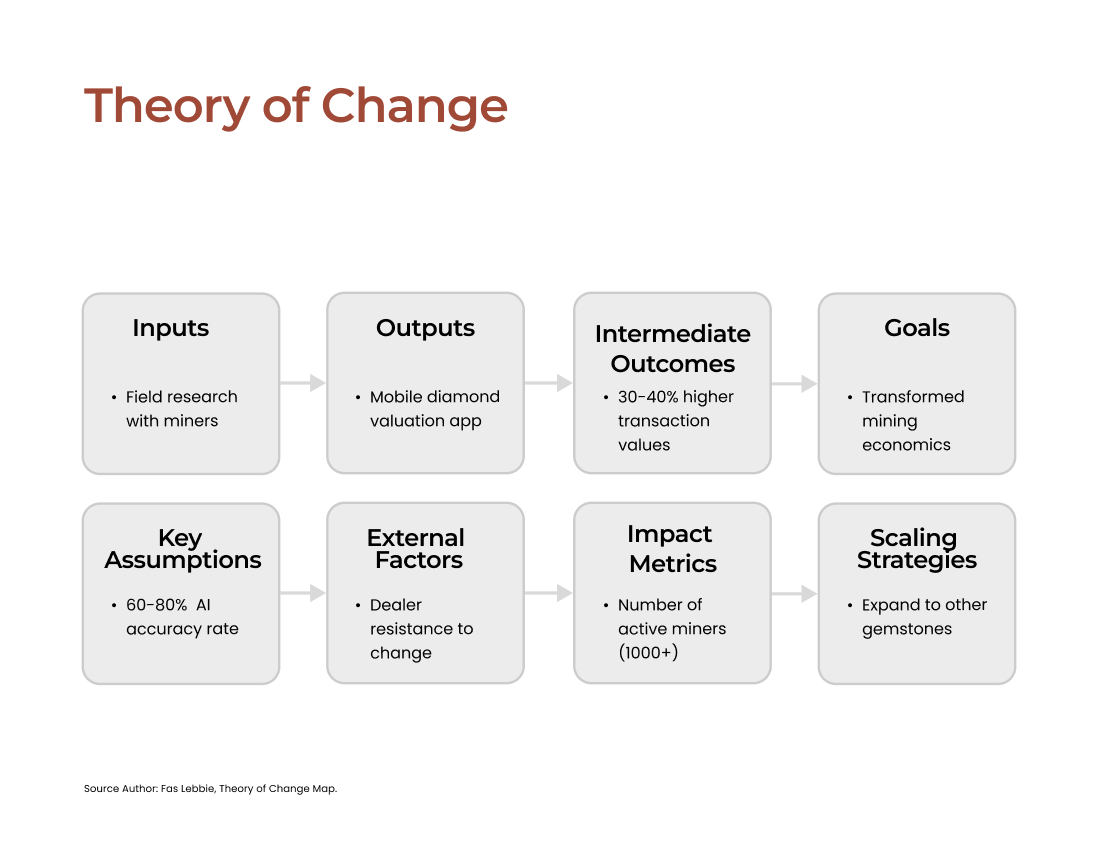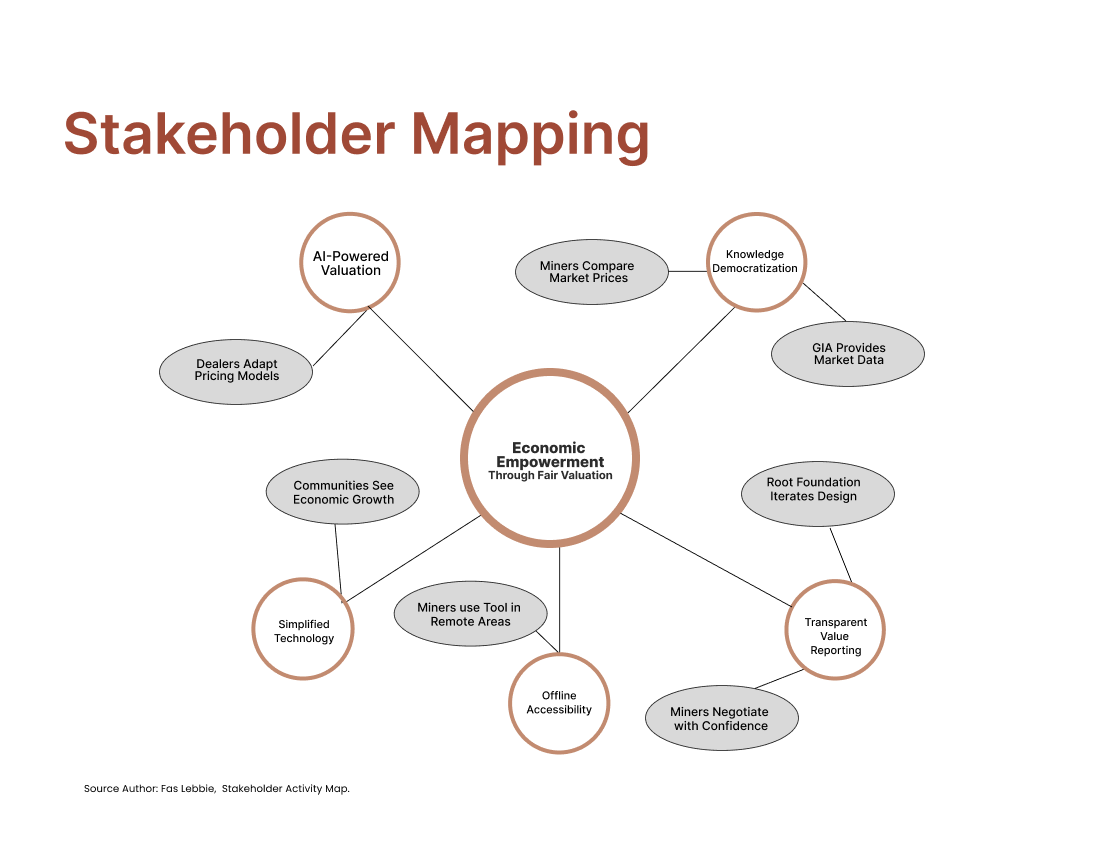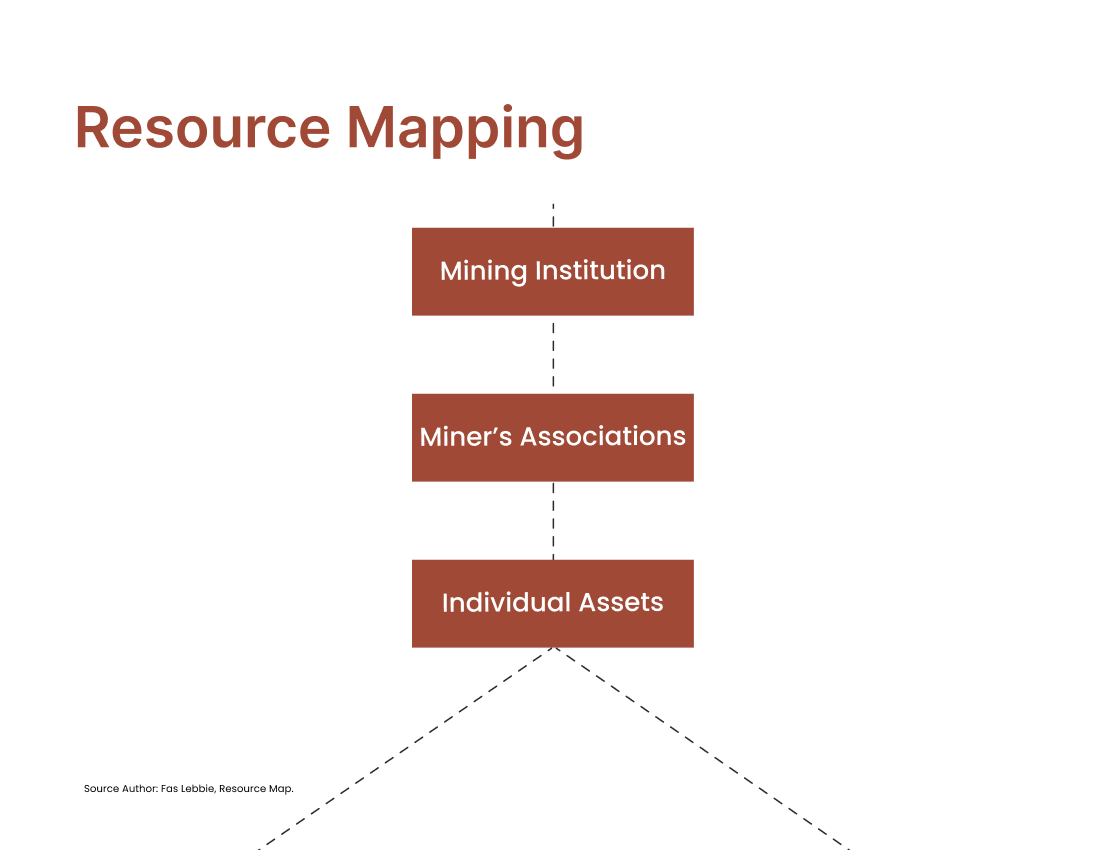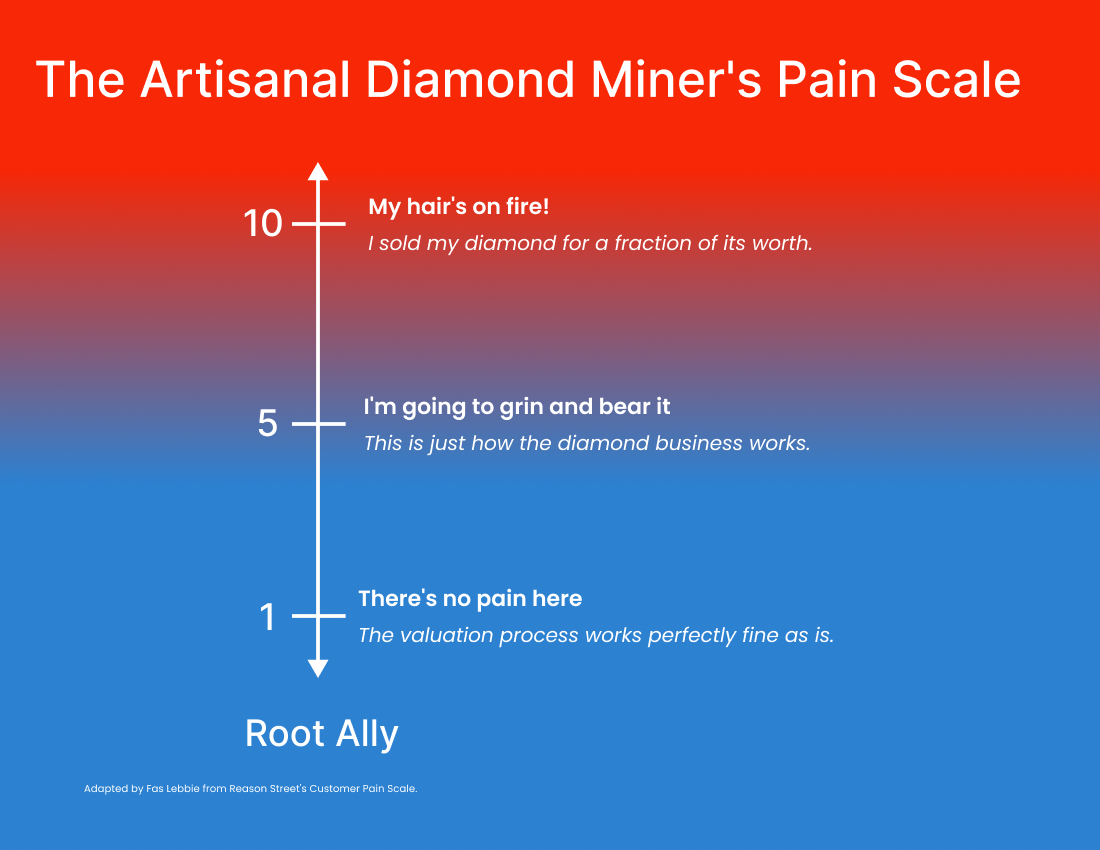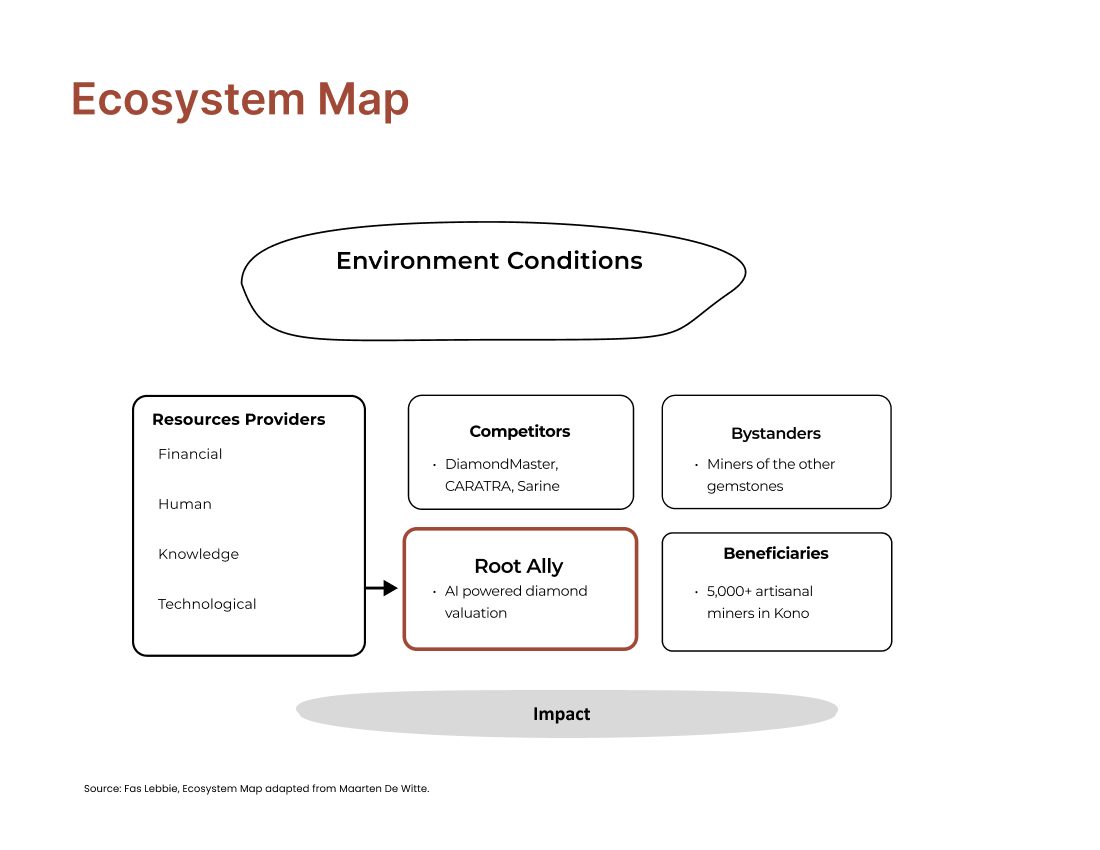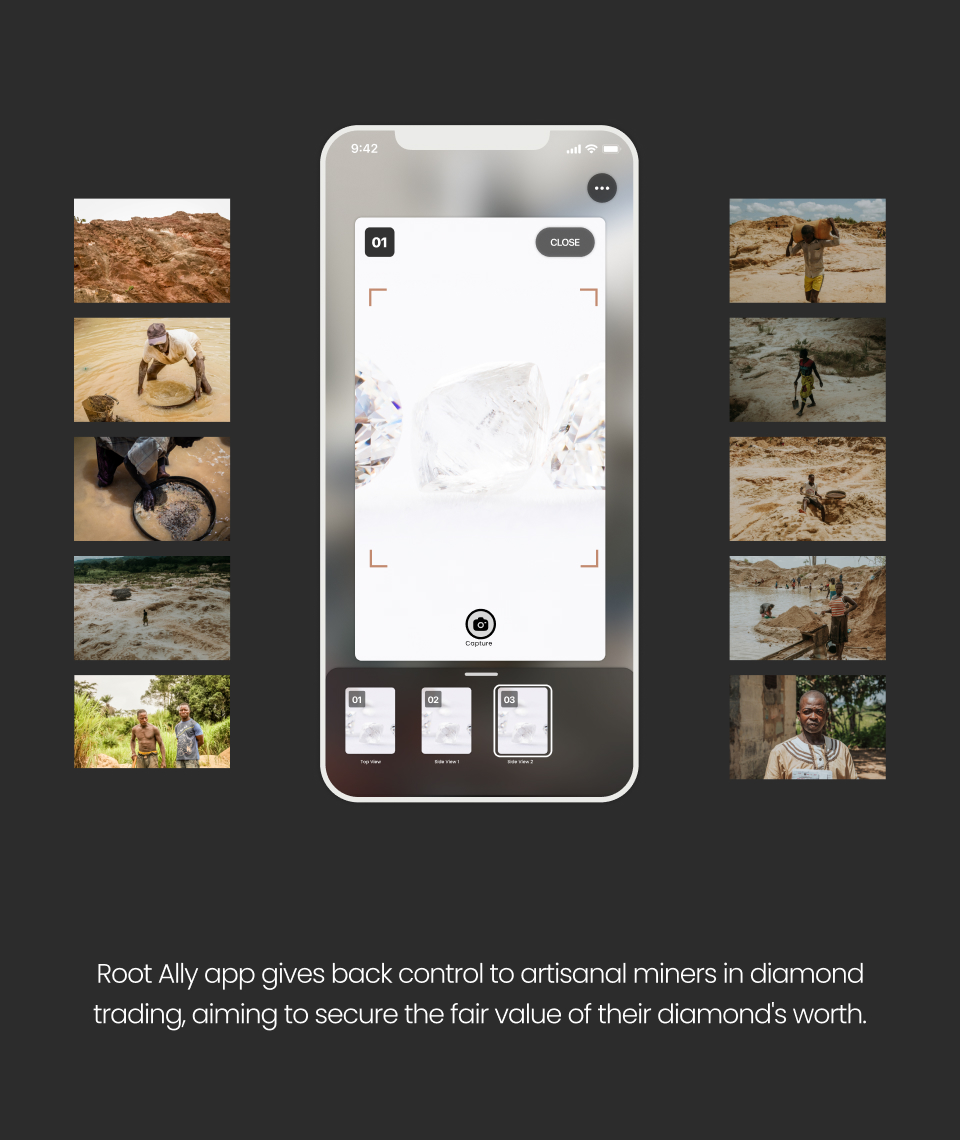Problem Context
Diamond valuation has historically favored buyers, not miners. In Sierra Leone’s artisanal mining communities, this information gap leads to systematic undervaluation due to the asymmetry in the valuation process. Existing tools such as DiamondMaster and CARATRATE cater to dealers and traders, requiring extensive gemological knowledge, subscription fees, and stable Internet, which most miners lack. Our early research revealed that most miners owned smartphones but lacked practical ways to assess their finds. Professional scanning systems do not exist in remote areas and, when available, are discreetly used. In some cases, they are in major trading centers, limited to Sierra Leone, but security risks and travel costs make them inaccessible. Root Foundation, the company launching this app, aims to build a local grading and valuation office as an embedded ally approach while engaging in potential partnerships with Pact and GIA. Through community-led discussions with miners about the local grading and valuation office in Kono, the Root Ally app emerged, shifting from a centralized valuation office concept to a decentralized mobile solution. This addresses security concerns raised by local miners, protects Root Foundation agents and office safety, decentralizes the accessibility of market prices, and puts them in miners’ pockets.
